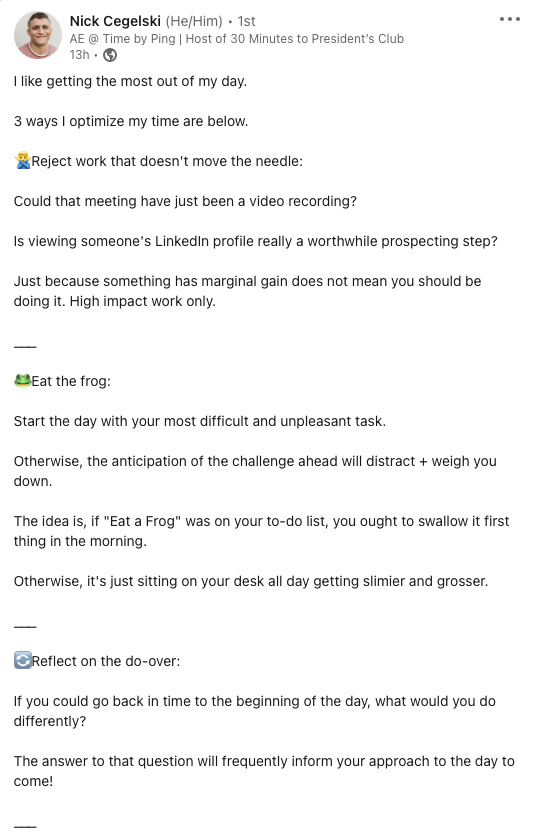Don't wanna be here? Send us removal request.
Text
BDR rules
If the lead is not recycled, it’s worth at least sequencing
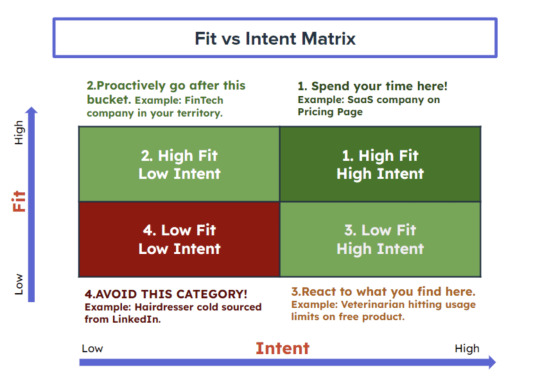
0 notes
Text
BDR Sourcing Workshop

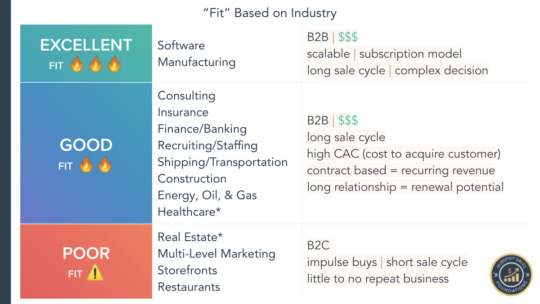
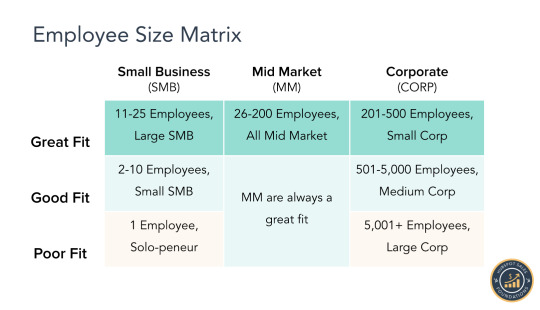
Different types of leads

BDRs are tasked with prospecting domains that are already assigned to their rep from Marketing AND sourcing open domains in that rep's territory.
Leads surfaced by Marketing or Sales Enablement are just a small fraction of the workable domains of our database. Creative sourcing, or finding good fit people or domains who should buy HubSpot in our database who at this point aren't hitting any triggers, is where the BDR provides the most value to our sales team.
Sourcing versus Prospecting
Sourcing is the process of sorting through your workable domains in 53 to identify where to spend your prospecting time. More specifically, this means finding good fit domains, collecting all the right information (such as the right point of contact, a compelling reason to reach out), and taking awesome notes for yourself or your reps to follow up with later while prospecting.
It's important to note that sourcing is a separate activity from prospecting, which is defined as reaching out to your sourced leads.
Why separate Sourcing and Prospecting?
The best BDRs and sales reps intentionally separate sourcing and prospecting activities for a few reasons:
1) Timing
There are specific times of the day based on region and segment where prospects are more likely to respond to a call or open an email. Doing your research ahead of time allows you to set up an uninterrupted block of call time to take advantage of peak hours without needing to know who to call or what to say.
The same goes for planning your week! If you spend more time sourcing Monday and Tuesday when prospects are less likely to pick up you can maximize your opportunity to be their welcome distraction come Wednesday and Thursday.
2) Collaboration
Depending on the segment, you will likely be working collaboratively with your rep to prospect leads. By taking great notes upfront, you can more effectively strategize and divide who does what during peak calling hours.
3) Efficiency - “Planning your tomorrow, today”
Cost of context switching - You lose 20% productivity in your day for each project you try to take on simultaneously due to recalibration from “Flow state”. Think of Sourcing and Prospecting as individual projects and focus on one at a time for maximum productivity!
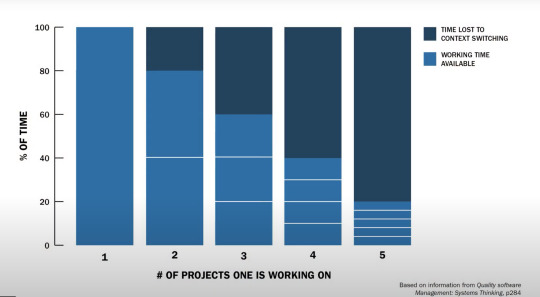
Theme days - catching topics/categories i.e. Financial Fridays; Marketing, Sales & Product are the most important of a business (putting that at beginning of the week). Meta theme of your roles - the most important parts of your role.

BDR Sourcing Workflow
Queue up leads for effective prospecting - The end goal of the sourcing motion is to identify, prioritize, and queue up leads to make your outreach to those leads as informed and productive as possible during peak prospecting times.
Create a standard saved filter of the workable domains in your territory. Include columns that allow you to quickly assess business fit and prioritize domains with high intent
From the view, do an initial "once over" of the domains. Add the high or medium fits to a Sourcing task queue to do a deeper dive into and bulk select and tag the obvious poor fits as "Low" using the Rating property
In your Sourcing task queue, investigate the domains further to prioritize
To keep track of your research, open a note on the record, use the #sourcing snippet ("Sales - Sourcing Information") as a template for your notes
Use LinkedIn to identify the best points of contact to reach out to
Research external and internal resources to develop a compelling reason to reach out
Create a follow-up task and add that task to the appropriate outreach queue to work through during a prospecting block
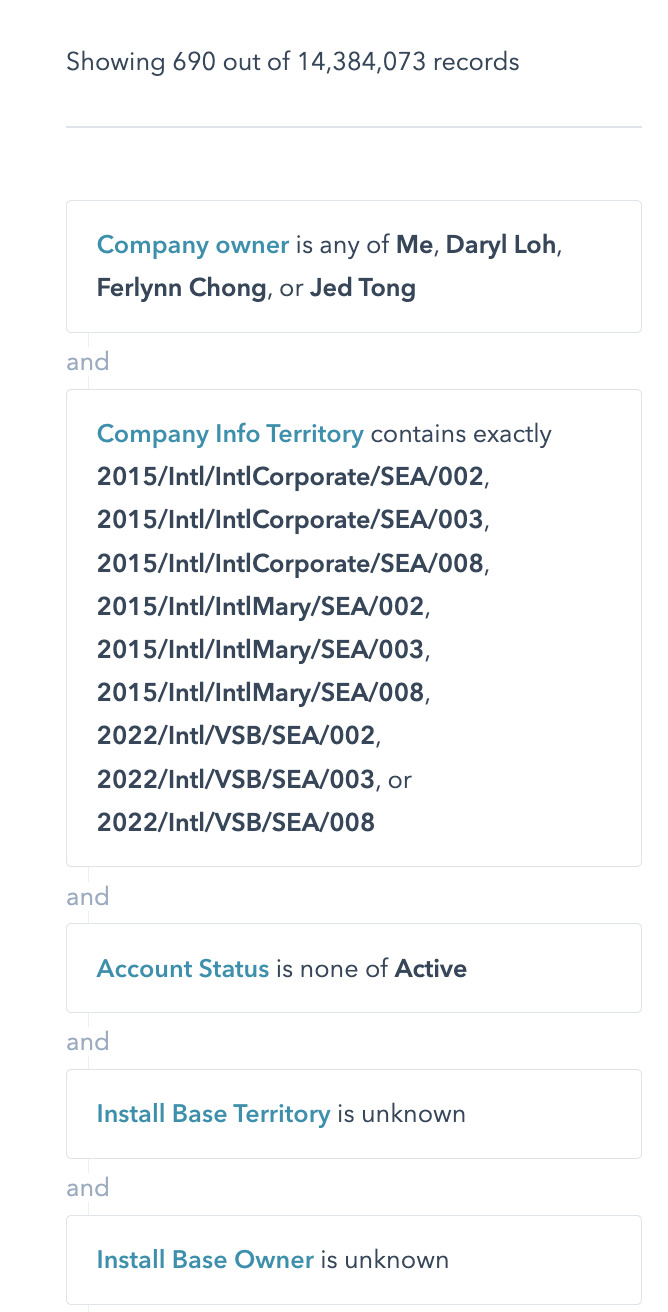

Identifying & Prioritising good fits
BDRs spend about 50% of their time sourcing good fit businesses that have had a recent interaction with the HubSpot brand (site visit or usage event). Recency implies urgency and that HubSpot is top of mind, so these tend to be easier conversations to start and quick wins.
The other 50% of the time is spent on good fit businesses with a high MRR potential. These high priority leads are called Target Accounts.
Indicators:
Looking at the domain and Datanyze you can evaluate again the following fit indicators:
Clear investment in their web presence indicated by website design and the content created.
Industries that historically use HubSpot, such as technology, SaaS, and manufacturing.
Currently using software (identified in Datanyze) that works well with HubSpot, such as Shopify, WordPress, or Salesforce.
Using a competitor (identified using Datanyze) that HubSpot can rip and replace, such as Pardot, Infusionsoft or Active Campaign.
Getting a fair amount of traffic (Alexa Rank under 2million).
Adding Columns
Think of these properties as belonging in one of three buckets: Domain Fit, HubSpot Intent, or Rep Activity
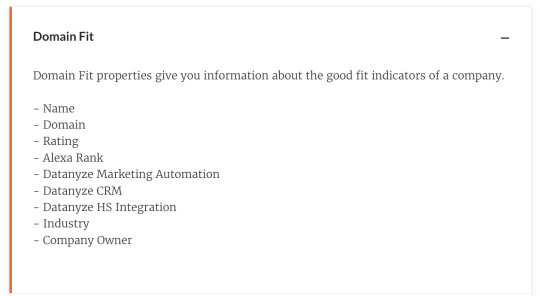

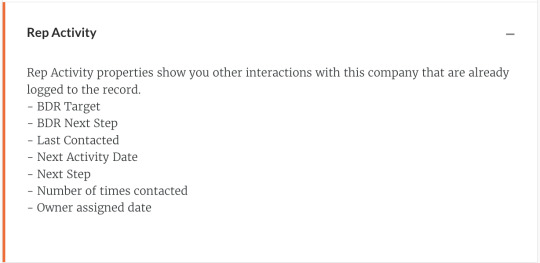
Rating domains
When rating companies/domains, the rating should be specific to the company domain and the degree of business fit for HubSpot.
When rating contacts, the rating should be specific to the strength and authority of the contact specifically. (Ex: Director of Marketing or Director Sales = High; Student/Intern = Low).
High Leads - These are the best fits based on the good fit indicator qualities. For High Leads you need to follow the prospecting playbook and make at least 8 phone calls before disqualifying. You should add a phone number to every high rated lead.
Medium Leads - These are the second tier of lead quality. You will work these more passively. Rather than calling every single day you will enroll these leads in personalized sequences and use a more passive approach.
Low Leads - These are the companies you do not want to follow up with. You can recycle these either as they come using domain controls or in bulk using the “bulk reassign” function.
Target Accounts
The "Target Account" property is used to tag our best fit companies. Marking a company as a T.A. means you and your rep are going to spend extra time identifying all of the key contacts at the company and crafting a very specific play to get in touch with them. This can include things like tracking company news via Linkedin Sales Navigator and tailoring your message to be super relevant to each person at the company.
50% of your time as a BDR is spent strategizing and working target accounts from all angles with your rep. Getting experience developing long plays for big MRR alongside your rep is hugely important for your development as a sales professional.
Working on Sourcing Queue
#Sourcing Snippet
Medium and High Domains/Leads generally find their way into a Sequencing or Call queue. The biggest benefit of setting aside time for Sourcing is that doing your research ahead of time allows you to have the most productive block of prospecting time. So as you dig in further to investigating fit, keep track of the notes you gather on this domain and the org structure using the snippet #sourcing. Pro tip: Pin your note to the top of the record for easy access and @mention your rep
Finding the Right Contact
Now that you've identified a good fit business, you can start finding the right person to reach out to the decision-maker. This is someone with a role that has buying power over new software.
There usually isn't just one so it's best practice to identify at least three. Remember the more work you do upfront the more productive your prospecting is.
Leveraging LinkedIn Sales Navigator
Sales Navigator features a powerful set of search capabilities, improved visibility into extended networks, and personalized algorithms to help you reach the right decision- maker.
Leveraging ZoomInfo ReachOut extension
ZoomInfo is a data enrichment tool that we use to identify and connect with prospects. It integrates with Portal 53 and can enrich Company data and non EU contact data.
This tool is only used in the NAM region.
Game Plan Outreach
Now that you have a good fit company and a good fit contact to reach out to. You need to decide how, when and what you want to reach out to this individual with. In the sourcing stage where you are just doing research to queue yourself or your rep up for productive prospecting block of calls and sequences later, you'll want to include as much pertinent information as possible in your notes to inform that interaction. As a BDR these plays will largely be collaborated on with your rep, however there are some best practices across the board.
External Information: Google and LinkedIn are your best tools here to find conversation starters around them and their business. Examples:
Recent news around their business (mergers, acquisitions)
Excerpt from something they wrote online or a speaking event they did
Role details from their LinkedIn profile from their current role
Background information from LinkedIn profile (education, volunteer experience, other organizations)
Internal Information: More and more our prospects are existing users, take note of any usage events in their HubSpot account that could start a conversation.
Information from the activity feed, ie recent pages visited
HubSpot content they may have downloaded
HubSpot usage events that indicate potential interest in advanced tools
Next Step: Prospecting Queue
Your final step is creating a task adding the prospect to the appropriate queue based on your rating! Tasks and task queues provide an efficient way to transition from managing your demand to reaching out. Rather than evaluating each lead one at a time and attempting to connect, you can preset a list of similar tasks (like phone calls to high rated "in progress" leads) and work through them like an assembly line.
In addition to your Sourcing queue, which is used just to make working through your high/medium fits faster than from the dashboard, you'll want to create several different prospecting queues so when you finish enriching a sourced lead, you can give them a next step task and put it in the right priority queue.
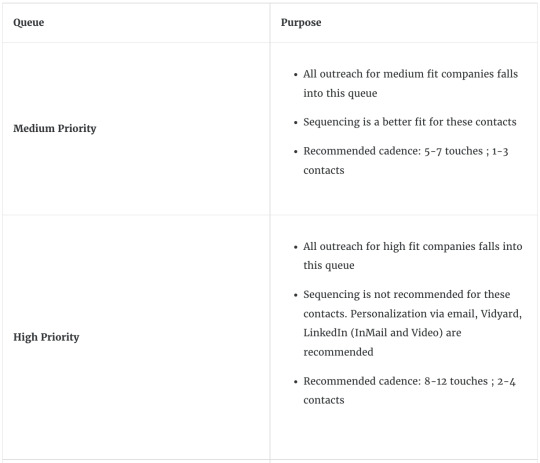

Sourcing: Bringing it all together
Frederik’s outsource tips - Zoom info, Google alerts, FinSME
0 notes
Text
Introduction to BDR

BDRs proactively drive demand to our GSs. They work in the upper left corner of this diagram with good fit leads who don't have a purchase intent. They drive demand there.


Even if the number of activities made by a BDR is not a hard target, it is a key indicator of success. The more outbound prospecting activities, the more chances of creating opportunities and booking meetings.
The BDR role requires great organizational skills in order to successfully complete a high number of activities per day.

One metric of a BDR's monthly quota is "meetings delivered". The BDRs source domains, prospect decision-makers, perform a connect call, and book meetings for their GS or PS. When a qualified meeting is delivered, the BDR will get credit for generating that opportunity.

The second metric of a BDR's monthly quota is "Monthly Recurring Revenue (MRR)". As opportunities created by BDRs progress to "Closed Won", BDRs will get credit for that revenue. BDRs spend their time with high-value accounts to generate large MRR opportunities for their GSs and to over-perform on their MRR target.
Overall, BDRs focus on outreach activities (calls, emails, Vidyards, LinkedIn inmails) to highly qualified accounts and contacts. Finding the balance between high activity volume, to highest value prospects is key to perform in the role.
Time management as a BDR
To maximize their success, BDRs separate their time into different activity blocks to avoid context switching. Let's review what a BDR day to day looks like below:

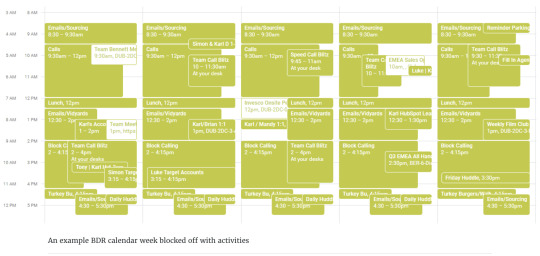
BDR to PBDR: Minimum 4 months on the floor, 4 months trailing 110% MRR, 110% meetings delivered, passing the Connect Call certification, not currently being on any plans.
PBDR to AIGS: minimum 9 months on the floor, 5 months trailing 110% MRR and meetings delivered, passing the certification, not currently being on any plans.
AIGS to IGS : 12 month minimum on the floor, 2 months as AIGS, 100% or more on target for the last month of PBDR and all AIGS months.
0 notes
Text
Mentor Program
3 main skills: Feedback, Coaching, and Active Listening.
“An inclusive work environment is an environment where all team members feel valued and comfortable to live their lives fully and do their best work.”
“Work is done with and through people“
🤝 Building trust goes hand in hand with psychological safety
1. Feedback
When delivering feedback, it’s most important to assume positive intent. This means going into the scenario assuming your mentee did not intend for their behavior to have a negative impact. How?
1. Tell your mentee you want to provide feedback.
2. Ask for their permission to give that feedback. Give them the space to say no if it's not a good time.
3. Find a private place to give the feedback. If you're asking to put them in a position to receive feedback—especially negative—it can be a lot easier and safer to process in a meeting room than at their desk in front of their peers.
4. Use the SBI model to deliver your feedback.
5. Be quiet and let them process it.
6. Thank your mentee for hearing your feedback.
2. Coaching
“Coaching is unlocking people’s potential to maximize their own performance. It is helping them to learn rather than teaching them.”
Actively listening
Asking purposeful questions
Providing guidance only when asked
Growth focused
Balanced with teaching

“Teaching often involves telling someone what to do, whereas coaching is focused on guiding someone to make a decision on their own. “
GROW stands for Goals, Reality, Options, and Will.
Goals - What is the goal(s)?Why is this important to you (right now)?
Reality - How does this match up with your other priorities? What are you willing to change to make this happen?
Options - What are your first few steps? What have others done in the past?How can I help? What resources do you need?
Will - How will you know if you're progressing? What will happen if you are not successful?
3. Active listening
Active listening: “That's why as a leader, listening is a critical skill to master.”
You will be a more effective mentor and leader if you can invest your energy in active listening. Active listening means giving your full attention to the speaker, concentrating not only on hearing what they are saying but also understanding what’s being said.
The LAER Method for active listening can be applied to both mentoring and listening on calls, and we use it here at HubSpot all the time. It stands for Listen, Acknowledge, Explore, and Respond.
Listen
During the Listen step, your focus should be on letting the speaker complete their thought.
Focus on what the person is saying. Hearing does not always equal listening, and focus can help you listen more intently.
Remove any distractions. Limit laptop and phone use when talking with your mentee.
Visualize what is being said.
Don't interrupt.
Pay attention to the speaker's tone and body language.
Reserve judgment until the speaker has finished talking.
Acknowledge
During the Acknowledgement step, your goal is to empathize with and truly understand the speaker.
There are verbal and non-verbal components to the Acknowledgement step:
Verbal. Use verbal reinforcement like “yes,” “right,” “uh huh,” or “I see what you mean.” With your verbal acknowledgements, you aren’t necessarily agreeing with the speaker, but rather you're verbally indicating that you're listening.
Non-verbal. Nod, smile and think about your posture (e.g. face the speaker).
Explore
In the Explore step, your goal is to drill down to the root cause of the problem.
Gather more information.
Confirm and clarify your understanding using reflective statements such as “I want to make sure I’m on the same page as you…” or “So what you're saying is…”
Respond
The most important thing to remember is that you should have a clear understanding of the situation or problem before responding. At times, you may need to go through Listen, Acknowledge, and Explore again before responding.
When you do respond, your goal is to reflect and then advance the conversation by incorporating options, next steps or actions.
0 notes
Text
Feedback like a Pro (Delivering)
Beyond Words: Competence Ladder
To make feedback worthwhile, make sure it benefits the receiver. Give a new-hire feedback that is too in-depth, and they may feel lost and demotivated. Give too little feedback to an expert, and the message is wasted.
How aware someone is that a skill or knowledge exists (conscious).
How adept someone is doing the skill (competency).
Unconscious, Incompetence - don’t know what we don’t know Focus on awareness Keep things simple Keep things positive
Conscious, Incompetence - aware but can’t Provide support Provide encouragement
Conscious, Competence - Knows how and what but needs focus Ask questions Encourage practice
Unconscious, Competence - internalised autopilot Provide specifics Encourage patience
Put it Together: SBI Model
Situation - First, put your context into perspective. Mention where and when the situation occurred. “I liked how you spoke to everyone.”
Behavior - Next, bring the situation to life. Be specific about the behavior that you want to spotlight. Also, ensure the specifics are ones you observed. This helps frame your message as non-invasive from your point of view. “You used our names…”
Impact - The last step is to ensure the message truly resonates. Remember feedback is not about explaining the behavior alone. It’s about acknowledging the impact of the behavior. “…really made us feel like our opinion mattered.”
Get to the Core: Radical Candor

0 notes
Text
Feedback like a Pro (Receiving)
“Average players want to be left alone. Good players want to be coached. Great players want to be told the truth.“ – Doc Rivers, NBA basketball coach
Feedback is not criticism, but is:
1. focused on the impact a specific behavior, action, or inaction had on the team, project, or HubSpot.
2. delivered with the intent to help the receiver develop future competence and confidence in a specific area.
3. It's all about the RECEIVER
benefits the receiver:
aims to help the receiver incorporates objective messaging focuses on learning from the situation to move forward
Feedback can be
1. Unintentional - ambiguous, vague, emotionally withdrawn, reactionary with no desired outcome
2. Intentional - absolute, transparent, emotionally invested, thought out with desired outcome
3. Negative - is informative, focuses on behaviours that should not be repeated, can be helpful and motivating when delivered intentionally, more motivational to an expert of the skill vs novice of the skill
4. Positive- increases commitment, focuses on behaviours that should be repeated, can fall short if delivered unintentionally, more motivational to a novice of the skill vs an expert of the skill
Fundamentally the success of feedback lies not with the giver, but with the receiver.
Feedback provides the receiver an opportunity to change, but it also creates a quandary.
Quandary: On the one hand, we should want more of it; On the other hand, we innately run from it. So, if the ability to accept feedback lies with the person who doesn't like getting the feedback what do we do?
Making feedback less painful for the receiver:
1. Our Ego - When faced with unpleasant feelings, our subconscious mind, rather than examine our shortcomings, deflects and allows our ego-defense mechanisms to block our ability to hear the feedback.
2. Our Brain - Feedback isn’t just a ritual of the modern workplace. As humans, we are wired to go into fight-or-flight mode when we see or hear signs of danger.
3. Social Situation - At the heart of our dislike of feedback is the fear of exclusion or loss of connection. If being criticized at work, or red-carded out of a game, doesn't seem life-threatening, consider that once people couldn't survive outside of their hunter-gatherer tribe.
Preparing for feedback (SCARF)
Status
Status is about our perceived value. When we receive positive feedback our perception of status (value) increases and conversely when we receive negative feedback our perception of status feels threatened.
This may cause us to lash out or downplay our great ideas.
To overcome this, look to transition your mindset to viewing feedback as an opportunity to improve. Assume positive intent from the feedback giver.
Certainty
Certainty is our ability to predict the future. When we experience ambiguity or confusion, if the feedback isn’t clear, it creates tension in our mind.
This may cause us to feel threatened and lose focus.
To overcome this response, seek clarity and understanding. Ask questions. Probe for specific behavioral examples. Understanding the specific action, or inaction can help you replicate or alter future behavior to have intentional positive impact. You could phrase your question like, “I don’t feel I got the responses I needed. What could I have done more of to get it?”
Autonomy
Autonomy is the sense of control we feel over events. We want others to trust our judgment and freedom to make decisions. When we receive feedback on how to do our work our autonomy feels attacked.
This may cause more stress.
To overcome this, focus on how the feedback will impact your success.
Relatedness
Relatedness is how safe we feel with others. A lack of relatedness and trust can make us feel threatened by the feedback.
This may cause reduced creativity, commitment, and collaboration.
To overcome this response, build up strong team bonds. Remind yourself that building trust and goodwill takes time and repeated social interactions.
Fairness
Fairness is how fair we perceive the exchange between two people. When we believe something to be unfair, it activates our insular cortex – the region of the brain that is linked to disgust
This may cause hostility and diminishing trust.
To overcome this, understand this feedback interaction is about you, not others. Stop comparing yourself to others.
Receiving feedback: 3Rs - React, Reflect, Respond
When we receive feedback, we generally go through three stages: we react, we reflect, and we respond. It’s important that we are self-aware during each stage for it is not what happens to us, but how we react, reflect, and respond that matters.
React
When we can put our emotions aside, we’re able to better understand the feedback we receive and use it to help us on the way to reaching our full potential.
Self-awareness: Understand and manage our emotional response (SCARF). Breathe deeply and slowly to ensure your brain knows that you are safe.
Do: Listen. Don’t rush to react. Detach yourself from what is being said as though it is being said about a third person. This will help to keep an open mind.
Reflect
In order to see the benefits of feedback we need to know how to put it to use: before changing our behavior, we need to make sure we fully understand the feedback, corroborate it with other evidence, and seek clarification or support if necessary.
Self-awareness: Be honest with yourself and be open-minded.
Do: Get more insight if needed. Be curious. Ask questions that require specific answers. Paraphrase what you heard to ensure you correctly understood what was said. Allow the right amount of time for reflection before responding. Give yourself permission to feel and recover from the experience before responding to the feedback you heard. Head to your own personal board of advisors, those who are invested in your success and who will tell you the truth. Share with them the feedback and seek their perspective and advice.
Respond
A feedback conversation is not necessarily about accepting the feedback in the moment, but it ensures we engage in the conversation so we can extract value from the feedback offered and do it in a way that we continue getting feedback.
Self-awareness: While there will always be something wrong with the feedback you get there will almost always be something right that you can learn from. Find the elements you are thankful for.
Do: Thank the person for taking the time to speak with you. If you don’t agree, respectfully say so and support your standpoint with facts or our alternative views. Furthermore, keep in mind you don't have to respond to the feedback immediately. Depending on the feedback you may want to take time to think it over before responding.
Asking for feedback
1. Give permission. Be upfront and honest with the people you work most closely with to create an environment of psychological safety. Doing this, along with telling people you want feedback will make them more comfortable delivering it.
2. Be specific about what you want feedback on. Asking, “How am I doing?” won’t return as much detail as asking, “Could you give me feedback on my engagement in the last team meeting?”
3. Start with your own reflections. This makes it easier for the person giving feedback. For example, "I really struggled with that part of the project… how did you think I handled it?"
4. Dig deeper into compliments. We often forget that we can build upon our strengths. Some of our best learning is from feedback focused on what we already do well. Knowing the impact of our behaviors makes it more likely we will replicate intention of a positive impact.
5. Ask different people to get a clear picture of your performance or how you are ‘received’ at work, you must seek out opinions from more than one angle and see how they compare.
Acting on Feedback
Grasping that we cannot undo old habits we can create new ones and learn to...
embrace feedback and control what gets in our way (ego, brain, social situations)
understand the social domains that activate our fight or flight response (SCARF)
remain self-aware during each stage of receiving feedback (react, reflect, respond)
...then we can forge ahead with a new mindset.
People with fixed mindsets view their skills as personal traits, while people with growth mindsets view their skills as malleable abilities that can be improved.
When we associate skills as personal and part of our identity (fixed mindset) receiving feedback can feel more like a personal attack. Whereas those with a growth mindset are more likely to overcome obstacles by seeing failure as a signal to try harder, rather than the time to give up. The good news, according to Dweck, is that we are not naturally divided into fixed and growth mindsets, so developing a growth mindset towards feedback is possible.
0 notes
Text
HubSpot reporting
1. Fundamentals of a data-driven business
1.1 A case for data-driven decision-making
Examples of data-driven decision making
1. Analysing user behaviour 2. Identifying best-fit prospects 3. Conducting user research or beta-testing 4. Surveying support channels 5. Monitoring industry trends
data is right there, collecting data does not need to be complicated
People are driven by results and learning - teams looking to innovate and adapt around the customers: Data literacy - collect, manage, visualise and apply data
1.1.1 Collecting your data
Centralised system to connect, collect and consolidate data for teams to be empowered with fullest picture to make decisions
1.1.2 Managing your data
Learning how to organise and clean data over time
1.1.3 Visualising your data
Transform raw data into digestible format and answer questions to give you a health check
1.1.4 Applying your data
Develop cadence with stakeholders and team to continuously communicate your progress in achieving business goals
1.2 Using Data to Define Your Purpose in Business
1.2.1 Golden Circle Framework
Your “What” - the products and services you sell
Your “How” - strategies that attract, engage and delight
Your “Why” - What are you trying to achieve, change, innovate or maintain
1.2.2 SWOT Analysis
Strengths
What types of internal resources - such as time, money, effort, do you currently have? What sets your teams apart when it comes to executing the strategies that you set? What types of characteristics does your organisation bring that could help ensure that you can execute your strategy with excellence?
Weaknesses
What types of disadvantages do you and your team have when it comes to executing your current strategies? If you’ve ever had strategies like these, what could your team improve for this time around?
Opportunities
How could your current strategy help push your team or provide opportunities for growth? What milestones or achievements have you set to mark your progress along the way?
Threats
What could negatively affect the strategy you’ve put into place in order to successfully reach it?
1.2.3 The 3 Horizons
Finding the right balance between short term activities and long term ambition
Horizon 1
What you are doing to power present success - goals & strategies you’ve put to extend your core business and hitting outline operating goals. Mainly sustaining your business, continue to generate revenue and optimising process efficiencies.
70% spent on executing horizon 1 plays - common for organisations to spend 80%-100%, leaving no other resources for Horizons 2 & 3.
Horizon 3
Sets goals and objectives that focus entirely on the future - long term plays to create genuinely new business models. No more than 10% of resources be spent on horizon 3 planning
Horizon 2
Focuses on transformation without losing sight of what makes horizon 1 successful as you lean into emerging innovations in the industry. Remaining 20% should focus on horizon 2 plans - preventing any fault lines between your short term and long term strategies
1.3 Data-Driven Goal Setting for Your Business
1.3.1 SMART Goals
Specific - what’s expected, why it is important, who’s involved, where it’s going to occur and which constraints are in place
Measurable - concrete criteria for measuring progress
Attainable - realistic and possible for your team to reach
Relevant - matter to business and address a core initiative
Timely - have a projected end date
Set reporting cadence and how often you are progressing towards your goals
1.3.2 Objective Key Results (OKRs)
Objective - qualitative outcome of your goals. They are significant, concrete, action-oriented and aspirational
Key results - numeric and quantitatively scored to determine whether or not your objectives are successful
Pro-tip: OKR should be ambitious enough so that you only ever hit around 60-70% of the goal you set
Efficiency is doing things right, effectiveness is doing the right things
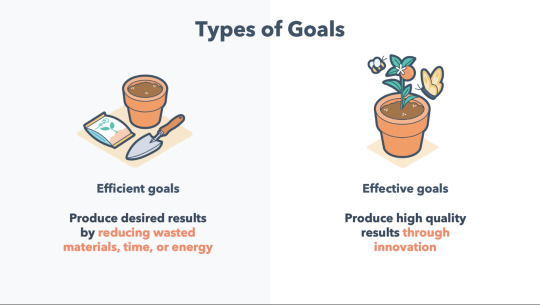
2. Collecting Meaningful Business Data
2.1 Unpacking the Power of Integrations
Third-party applications so they can share information and provide you with more features while using software i.e. HubSpot App Marketplace
Native integrations - built by one of the software companies or parent companies that you are looking to connect i.e. Built by HubSpot
Advantages:
Troubleshooting support Free or lower cost compared to hiring a developer build a custom integration Ready-you-use, out-of-box
Custom integrations - build with specific business use cases in mind. Typically occurs when either no native integration is available, or no existing integrations have the functionalities you need. Built using Application Programming Interface (API)
Factors to consider: Time & Scale
iPaaS (Integration Platform as a Service) - for a custom solution but don’t have a developer i.e. Zapier, Mulesoft, Operations Hub
2.2 Auditing Your Tech Stack
App turnover is. higher than employee turnover
2.2.1 Start your tech stack audit
How is your company marketing to, and reaching your target audience? How are you tracking customer content interactions? Do you measure your success across a number of analytics platforms? What tools do you use to reach out to prospects via email? Do you currently use an app to enable and track events like webinars, online meetings and video conferences? How do you track customer connections across different channels?
2.2.2 Looking at the list of apps, ask
Who is using the app? At what stage of the business process is it being used? What specific features are used most often? What metrics are tracked through this app? Where is that data stored? How is it being reported on?
2.2.3 Identify value proposition of the app
Which team uses the app frequently? If this app were removed, what processes would be disrupted? How much are the competitors charging for this same functionality? When does the app contract expire? How much time and effort would it take to migrate to another app? What business needs are not being met by this app? What type of reporting or analytics would make this app more beneficial? How easy is it to use this app?
2.2.4 Striking a balance between performance and cost
How does this app’s functionality and usage overlap with other apps? How does this app integrate with other apps? What features of the app are not currently used?
Unused apps, duplicate features and siloed data
2.3 Using the HubSpot Marketplace
HubSpot is more than software - customisable growth platform with an entire eco-system of apps and solutions partner available
3. Managing Your Business Data in HubSpot
3.1 Unpacking CRMs and Object Data
Objects: represents a specific type of thing your business has a process for tracking i.e. one for contacts, one for companies
Object database: Dividing your data into group to make it easier to search without memorising any equations or learning any equations
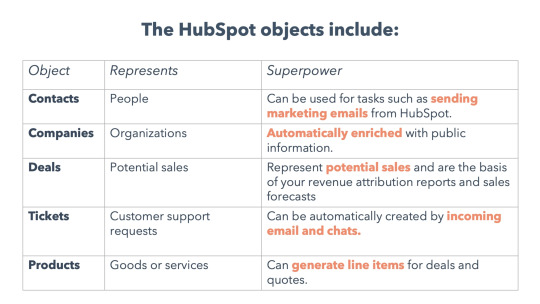
Custom objects: defined by users to store specific types of data that standard Hubspot objects don’t represent natively
Events: Analyse customer behaviour more granularly i.e. using events to track clicks on certain options on website navigation bar
3.2 Preparing Your CRM for Reporting
Every property has a field type - when you create a custom property, the type of information you want the property to collect and store will determine the field type to select:
Single line text - word, phrase, sentence, numeric i.e. first and last names Number properties - numeric only, more than/greater than; less than Different segmentation properties - dropdown select and multiple checkboxes Date picker property - before, after and between dates Radio-select - similar to dropdown select, different visualisation Multi-line - string of alpha numeric, paragraph/list of items Single check box - Yes or no Calculation property - set out custom equations based on number and date properties
3.3 Auditing and Cleaning Your Data in HubSpot
Clean data is accurate, complete, consistent, uniform and accessible
3.3.1 Audit your contacts
Use HubSpot’s lists or filters to see contacts who:
Have had their emails bounced Have unsubscribed to your emails at anytime Whose last activity date was over a year ago Do not have first/last name Do not have key qualification information
3.3.2 Audit your custom properties
Single-line properties - should they be another property type? Duplicates i.e. job, job title Properties that are no longer being used Properties that are inconsistently formatted
3.3.3 Audit your workflows
Look for inactive or duplicate workflows Check for out-of-date workflows Archive old workflows Create a naming convention
3.3.4 Review your permissions
As a Super Admin,
What permissions does each member of your team currently have? What tools do they each have access to? Is there anyone whose permissions need to be changed? Are there any users that you need to delete?
As an Individual Contributor,
What tools do you currently have access to? What data do you need to be effective in your role? Does a user permission help solve that issue?
4. Driving Growth with Attract Stage Reporting
Growth Hacking - experiments and processes aimed at building and maintaining a company’s customer base
4.1 Structure experiments based on scientific method
4.1.1 Determine your objective
With a clear objective in one sentence
4.1.2 Develop your hypothesis
Cornerstone of your research - how you test your assumptions using qualitative data Use this: We believe that [assumption in present tense] because [supporting evidence] Pro Tip: Your hypothesis should be rooted in a specific user problem at a specific point in time and from a customer perspective
4.1.3 Create a prediction
If we [experiment idea] then we predict [result/metric]
4.1.4 Design your experiment
Look at various assets on website and brainstorm alternatives for design, working and layout. Other things: email subject lines, sender names, different ways to personalise your email Simple changes drive BIG improvements Choose a primary metric to run the test
Considerations when designing your experiment:
Are there any technical/operational assumptions being made in this experiment? How would the results of this experiment impact other areas? What built-in assumptions are potential factors that may influence results?
4.1.5 Run your experiment
Need traffic volume high enough to determine a winner with confidence of the test statistical significance (test resource here)
4.1.6 Interpret your results
Include metrics such as:
Page visits Email delivered/open rate Form submissions Opportunities created Close rate Influenced MRR
Include summary of 1-2 sentences and highlighting key findings that answers the following questions:
Was your hypothesis correct? Do the results of this experiment change your perception of your customers? What are the implications, limitations and potential factors that may have impacted results? What about the results, if anything, surprised you?
A/B Testing
Two or more versions of a web page or email are presented to different segments of your audience. They are versatile - you can test on large and small elements of your marketing campaigns.
Start with CTAs
i.e. instead of “Subscribe”, use “Learn more” “Get started” “Join Us”, colour, button size, position
Conduct research on your ideal customers
Website copy, blog content, social media content and advertising are created with buyer personas in mind
Use data to inform campaign decisions
Puts customers first, ensuring all campaigns are relevant to customers
Segment your audience
Different customer groups exist within your wider audience group. Targeted, personalised information help reach those segments
Retarget your advertising
Especially cross-channel marketers. Keep customers top of mind, by focusing on:
Click-through rate Form submission Cost per click (CPC) Cost per lead (CPL)
Create consistency across channels
Channels to work together to provide context as customers go from one channel to another.
DO: Marketing Hub Metrics
5. Unlocking the Power of Engage Stage Reporting
Revenue metrics examples:
Total revenue Revenue by product or product line Percent of revenue from new or existing business Revenue by territory or marketing Year-over-year growth
Lagging indicators measures output of something that has already happened. For example: Total sales last month Conversion rate Number of deals won/lost Average days to close Number of new customers Churn rate
Leading indicator measures inputs, progress and the future likelihood of achieving a goal. Highly manageable metrics that leaders can have control over and can be tracked by activity metrics. For example: Calls made Emails sent Conversations Meetings scheduled Demos or sales presentations Referral requests
Inspire competition by running contests
Additional metrics to consider for sales:
Quota attainment - average number of salespeople meeting or exceeding quota. Pro tip: If less than 60% of team hitting quota, quota is unrealistic; if 90% - 100% are hitting quotas, they are coasting Average deal size - total number of deals/total $ amount of deal. If moving upmarket, increase in average deal size; if looking to target SMB, reduce in deal size but ensuring increase in number of customers and deals. Helps to identify potentially risky deals Sale funnel leakage - highest number of prospects drop out of sales funnel. Track stage by stage conversion rate. Able to identify if sales people are not qualifying enough, giving bad demos or negotiating poorly.
5.1 Analysing sales content
Marketing content is produced to capture prospects' attention and generate interest. It tends to be more general and practical — like an informative blog post or infographic about an industry-relevant topic. Sales content is more pointed. It's brand- or product-specific content designed to compel prospects to buy.
And, yes, ‘every minute a rep spends creating content is a minute they're not selling,’ But personalized content is exceptionally important to move leads through the buyer’s journey.
Many companies already have high-quality sales content on their website. By centralizing all this existing sales content into one location, reps can quickly find resources to share with leads.
DO: Sales Hub Metrics
6. Creating Momentum with Delight Stage Reporting
6.1 Net Promoter Score (NPS)
6.1.1 Quantitative
Ask customers how likely they are to recommend your business on a scale of 1 to 10. Organise response into Detractors (0-6), Passives (7-8) and Promoters (9-10). Then, subtract the percentage of Detractors from the percentage of Promoters to determine overall NPS
6.1.2 Qualitative
Knowing what the team does well, what misses the mark. Ask open ended questions like “What’s the one thing we could change for you to give us a 10 next time?“
6.2 Customer Satisfaction Survey (CSAT)
Use CSAT to capture sentiment after your customer has: Made a purchase Activated in your tool Interacted with your support or success teams
Ask questions like: How satisfied were you with your experience? Answers are a corresponding survey scale, which can be 1-3, 1-5 or 1-10, giving businesses a snapshot idea of how customers feel after completing an interaction
6.3 Customer Effort Score (CES)
Determines how difficult or easy it is to use a service from a 7-scale survey “Very Difficult” to “Very Easy”. Strongest predictor of future purchase behaviour for cross selling or referrals
6.4 Customer Lifetime Value (CLV)
Average purchase value * Average purchase frequency rate * Average customer lifespan
Gives estimated amount of revenue one customer will spend at your business
6.5 Customer Retention Cost
How much money are you spending on customers to retain them? To ensure you are making smart decisions by comparing how much you are investing in retaining a customer VS how much you want to spend in a new product or service
Total expenses of your customer success effort (payroll for success & service teams, engagement and adoption, professional services and training, and marketing) / Total # of customers
6.6 Monthly Recurring Revenue (MRR)
Total # of active customers purchase value * Average revenue per user
Gives you an idea of how much money you are generating each month
The Customer Service Metrics Calculator
DO: Service Hub Metrics
0 notes
Text
Inbound Marketing by HubSpot
1. Inbound marketing

Creating one-to-one relationships that have a lasting impact on your visitors on your brand
In the past: 350-word pieces of content with correct links and keywords to rank
Today: Insight into their motivation, goals, roadblocks and behaviours -> your content exists to empower your customer's growth
Before you can initiate any relationship, understand who you are trying to connect with
1.1 Creating buyer personas help you develop empathy
You start to gain their trust by creating the content that best aligns with them as people
1.2 How to Attract?
Know where your ideal audience is currently finding and engaging with new concepts and ideas
Consider how you are leveraging ads, engagement, business pages on platforms like LinkedIn, Facebook and Twitter
Consider content strategy - pillar pages, blog posts, video content
Understand the problems they face - and how to remove roadblocks i.e. use search advertising to reinforce the searches at the stage which you are able to offer the best guidance at that particular stage of the journey through keywords
Keywords: Targeted, relevant, helpful
1.3 How to Engage?
An experience that caters to your prospects' preferences from the moment they engage with your content
They're beginning to trust you -> Use that trust, work with them and remove the initial roadblock
Keywords: Contextualised, segment, personalised
1.4 How to Delight?
Empower people to think beyond their immediate roadblocks and grow with your business
Ask them questions on how to improve your process
1.5 Fundamentals to inbound marketing
1.5.1 Contacts
Anybody your company markets to, sells to, partners with, engages with or employs. An individual with who you’re creating a relationship with
A strong contact database is important in allowing your business to grow
Identify which contacts your business can help and ultimately delight
1.5.2 Buyer personas
Semi-fictional representations of your ideal customer based on real data and educated speculation about demographics, behaviours, motivations and goals
1.5.3 Buyer’s journey
The active research process someone goes through leading up to a purchase
Awareness stage -> Consideration stage -> Decision stage
1.5.4 Content
Inbound = Content + Context
Content: Blogs, infographics, ebooks, video and presentations
Context: who are you creating for? What are they interested in?
1.5.5 Goals
When setting out with your inbound marketing efforts, start from a place where you know what you want to achieve
“If you don’t know where you want to go, how will you know how to get there?”
Goal setting helps you provide alignment between your marketing and sales team
Set goals that show how marketing efforts help your company hit the numbers and grow -> Set aside time for analysis (daily, weekly, or monthly)
2. Content - blogging, long term content strategy, topic clusters and pillar pages
2.1 What is content marketing?
Strategic marketing and business process focused on creating and distributing valuable, relevant, and consistent content to attract and retain a clearly-defined audience and ultimately drive profitable customer action
When done correctly, this helps create a relationship with your audience which leads to trust
Content delivers the message of your inbound marketing strategy -> the art of communication with your prospects without having to sell to them
2.2 Why is long-term content planning important?
Think of your long-term content plan like a savings account -> If you make a plan and are consistent in approach, you are giving yourself the best chance at achieving ROI from your consistent effort
A long term content plan helps you stay organised -> align content goals to overall goals
Tell a story -> Lead your prospects down their buyer’s journey
2.3 How do you build a long-term content plan?
2.3.1 Setting marketing goals
Provides you long-term vision and short-term motivation
SMART goals
2.3.2 Auditing or assessing your organisation’s initiatives and assets
Content audit - Identify all of the marketing assets that you have at your disposal and identify gaps in your content strategy
Where to find content that might be hiding?
A file manager or marketing folder
Ask your sales team what type of collateral they use
Check-in with the more tenured employee
CRM or content management system (CMS)
Event-based audits - Any upcoming projects, priorities that involve content creation
Upcoming priorities by month
Initiative overview
Theme
Prospective blog post topics based on your buyer persona
Inbound marketing campaigns that tie together your effort
2.3.3 Identifying the buyer’s journey for your buyer personas
Able to holistically provide value at the awareness, consideration and decision stage for your prospects/customers
2.4 What should a long-term content plan look like?
<Add in template>
Needs to be in real-time
Needs to allow for multiple contributors to access and collaborate
Wash, rinse and repeat the process for the entire year -> Requires a lot of effort and thought (start with breaking it up by the quarter)
2.5 Creating a blog post
Attract stage -> breaking into search results and being shared on social media -> convert into leads by strategically promote relate offers
Keywords: Reliable, trustworthy source of information
2.5.1 Pick a topic and a title
Write educational content - answering questions or problems that people are searching for
Write about your industry - not yourself
Brainstorm a list of topics i.e. FAQ, what do customers need to know
Pick a topic (either general or narrow topic) - do keyword research & association
Pick one long-tail keyword to focus on per post - often question-based
Make a list of topics that support a specific conversion - longer-term blogging strategy
Start by creating a working title - focus on one single angle
Include a long-tail keyword in the title
Make the value of the post clear in the title
Put your keyword at the beginning of the title if your title is too long
How long should a blog post title be?
The ideal blog post title length is 60 characters - Google search engine is about 600 pixels)
Headlines between 8-12 words are shared most often on Twitter
Headlines between 12-14 words are liked most often on Facebook
2.5.2 Format the Post
Write an introduction - keep it captivating, grab their attention, use humour, be empathetic, include an interesting fact or statistic
The body is where readers derive most value - cover topic in full and ensure expectations that blog title promised are met
Mention your keyword at a normal cadence throughout the body of your post and in the headers
Whitespace is your friend - allows the visitor to focus on content, not clutter
Use section sub-headers - organise and break up your blog posts into different sections, should be written with H2 tags or smaller (never H1 tags, which signal a title)
Bold important information
Include images to visually break up your text - loosely related to the content
Use multimedia content wherever it’s possible to break up the blog post - images, videos, audio recordings and social media posts
2.5.3 Promote offers on your blog to increase lead generation
Use your blog to strategically promote your current offers - be helpful, not pushy
Insert a CTA after the first few paragraphs - through hyperlinked texts
Include a CTA at the end of each post - offer should be relevant to the content that a visitor has just read
Add a pop-up that the reader sees as they scroll down the page
2.5.4 Optimise the post
Optimise the page around the long-tail keyword through title, body, URL, Alt-text and meta description (about 300 words)
Include relevant internal and external links within the post
Include easily accessible options to share your blog post
Make sure to keep mobile in mind when structuring your blog post
Write consistently and frequently
2.6 Creating topic clusters and pillar pages
Google’s “Hummingbird” algorithm update in 2013 - focused on parsing out phrases rather than focusing on specific search queries
Google’s RankBrain update in 2015 - interpreting search with past search history with related topics
Content pillar (aka pillar page): a website page that covers a broad topic in-depth and is linked to a cluster of related content
2.6.1 An effective topic cluster and pillar page
Core topic: take the shape of the pillar page & what you are planning to plan for
Subtopic: support and relevant to the core topic yet strong enough to stand alone as a blogpost
Hyperlinks: connecting all relevant subtopics to the core topic (pillar page)
Ranking on Google: (1) Featured snippet and (2) #1 Search topic
Table of content to navigate each section, which has an anchor link that will take you to specific sections when clicked
“Back to top” at the end of each section
Not every relevant sub-topic will have a link and that’s okay - as long as ALL sub topic connects you to the pillar page
2.6.2 How do you create a pillar page?
Resource pillar page
Focuses on internal and external links
A helpful resource in connecting the reader with the most relevant sources on a specific topic
Generally, you wouldn’t want to send people away, but this solves for the visitor and not your business
Advantage: generate inbound links from sources you include from the page
Have to develop an outreach plan to let the sources know the page exists
10x content pillar page
Made up of your own media
The format of the page is similar to that of an ungated ebook or guide
It gives visitors an idea to view your content before deciding to commit or to download it
Solves for the search engine because it allows them to theme like-minded topics
Make it conversion-focused by making the content of the page into a downloadable resource
90% of website visitors prefer to read HubSpot’s lengthy content in a pdf as opposed to a website page
Seven steps to creating a 10x content pillar page
Choose a core topic - make sure it connects to or support at least one of your products or services
Identify a topic cluster - Brainstorm a list of as many subtopics as possible that bring value to your core topic and narrow down to the 6 strongest subtopic
Create blog posts for needed subtopic content
Repurpose subtopic content into a downloadable offer - the goal is to use the content you have to put together a helpful story for the reader *create content offer BEFORE pillar page*
Deconstruct downloadable offer into a 10x content pillar page
Link relevant owned (internal) media to 10x content pillar page
Create a conversion path to let people access your 10x content pillar page - let people know this content is available i.e. Top navigation, a dedicated section with CTA near the top of the homepage
2.6.3 Continued success for pillar pages
Thoughtfully answering questions on Quora
Adding insights to other blog posts through blog commenting
Contributing through leadership guest posts published on other websites
Four opportunities to grow your pillar page
Offer various forms of media per section for the reader to engage with - repurpose interactive infographic with popup texts, repurpose content into infographic-like images, repurpose content on the page into a video
Sprinkle in relevant content offers that will help buyer personas continue educating themselves through the buyer’s journey - offering additional content offers like an ebook or whitepaper
Insert a heatmap on pillar pages to better understand performance and optimization next steps - using hotjar to identify the section that people find most value before conversion
Grow a subtopic into its own topic cluster and pillar page
3. Promotion - social media
Help you expand your other marketing efforts
Help you build brand awareness
One of the most powerful drivers for word of mouth
Using social media to attract buyers
Building your social media strategy you’ll need:
To be able to explain each social media channel
To understand the impact of social listening and engagement
To develop a content strategy for your social media plan
To be able to identify ways that metrics are crucial to your success
To integrate social media into your other inbound efforts - website, conversations, blog posts
3.1 Social media channels explained
3.1.1 Facebook (2.2 billion users)
More than 67% of Americans use Facebook as their primary source or news
Business page benefits
Personal pages have a 5k friend limit while business pages can have millions of followers
Access to analytics (insights)
Ability to categorize company for search, add mission statement, product catalogue, awards and give customers chance to do reviews
Most important reason: advertising
3.1.2 YouTube (1.3 billion users)
2nd largest search engine behind Google, with 300 hours of videos uploaded every minute and 5 billion videos watched on YouTube every single day
Highest referral rate, high conversion rate when it comes to paid advertising
Regional content with channel subscribers
Syndicate content and consider inerts of advertising before a video
3.1.3 Instagram - owned by Facebook
3rd largest social media platform and is the fastest growing with 90% of audience under the age of 35
Convert personal Instagram to business profile
Deep engagement: 80% of Instagram users follow at least one brand account
Engagement on Instagram is 10x higher than Facebook; 54x higher than Pinterest and 84x higher than Twitter
3.1.4 Twitter
By the minute news through 280 characters (photos, videos, links and animated gifs), there are more than 500 million tweets sent every day
Discover what is trending with customers, employees, partners and prospects
Engage regularly with your clients on this platform as 80% of advertisers’ inbound social customer service requests happen on Twitter
Organic networking directly with audience to build loyalty and trust
3.1.5 LinkedIn
Find latest B2B news through photos and video posts
Look up individuals you are meeting with
Find out more about a prospect
Build thought leadership
Offer value through targeted advertising
To network in LinkedIn groups
3.1.6 Pinterest
A series of shared, a thematic bulletin board where users can pin things they relate to. The average life of a Pinterest Pin is 3 months
Referral traffic that can turn into leads and sales
Females were the biggest audience of pinterest but now 40% of new sign-ups are now males
Board with links to products and services, board with blog posts or demonstrating thought-leadership
HR can use boards showing great things about the company
Boards for whitepapers and videos, employees’ stories
3.1.7 Snapchat
Lost a bit of their market share to Instagram, but Snapchat is moving into areas like Augmented Reality (AR). Similar to Instagram, snaps last 24 hours with the largest demographic ages are from 12 to 24
You want to be found in as many of these places as possible. Start small and focus and build as your team grows and resource pool grows.
3.2
4. Conversion - conversion optimisation
5. Lead nurturing -
6. Conversational marketing
7. Sales enablement
8. Customer marketing
0 notes
Text
Efficient Time Management by Chris Croft
Can you find ways to automate repeating tasks and problems?
If you are a manager, only solve creative problems
Delegate repetitive tasks to someone else or create systems to avoid repeating problems
Managing repeating problems
Prevent the original problem
Automate or delegate tasks
Improve processes
Notes: - Ask why more than what, dig deeper to the cause and fix the root of the problem - Food for thought: What are your repeating time wasters?
How to reduce inefficiency?
Start with a reliable foundation - tools you use to run your life
Don’t tolerate anything inefficient or unreliable - it is worth spending money and time to fix it
My Value per Hour:
(Hourly rate) x 2 = Real cost
(Real cost) x 2 = Total value
Annual Salary/2,000 = Hourly pay
Hourly rate x 2 x 2 = Total value
How to improve your desk?
Get rid of the loose papers on your desk
Make sure your desk is well suited for you
Think about your desk’s line of sight
What should be on your desk?
Computer
Jobs-to-do list
Blank paper - paper is better to visualise instead of digital
Pens or pencils
Notes: - A neat list is much more useful than a pile of papers - Messy desk is distracting - Pomodoro Technique - work for a set amount of time and then reward yourself
Put things in the right place
Have spares of everything
Put things in clear sight where you can’t forget them - batch things together to save time
How to reduce your filing?
Use search to find the emails you’re looking for - customer name, company name, product name, date
For paper, try an app like Evernote for photographing and digitally filing documents
Filing system: (1) To-be-filed box, (2) Trash bin, (3) Can’t decide box
Notes: - Set up an auto-tagging system to help organize emails with similar content - Once can’t decide box is full, throw it away
How to maximise spare time
Use technology for work
Have a plan
Carry reading material (book or kindle)
Be idle, enjoy nature, or socialize
Notes: Falling back on TV or social media should be the last on your list
Listen more to save time
Things to avoid talking about:
Details
Circular situations
Anything out of your control
The past
The future
Yourself
Use a master list
Should include all the big items
List can be in any form that works for you
Putting a list on the wall is preferred (visibility)
Set aside time to create and update your list (~15 mins to get it done)
Reason: - It’s better to know that not know. If list is too long, you need to either delegate or delete it - Allows you to plan and manage your time
Use a daily list
Use a daily list in conjunction with the master list
Master list: Big-to-dos
Daily list: Smaller parts of larger projects
Should have less than 10 items
It is important to keep the master list and daily list separate
Daily lists must be done daily (not only under stress)
Notes - Writing daily lists in the evening helps because it’s quiet, it gives you closure for the day and helps you overcome procrastination
Get the most out of your calendar
Always keep it with you so that you use it everyday & all the time
Put in appointments with yourself to think & plan (one per day, ~30 mins)
Keep your calendar 25-50% empty to allow for inevitable problems
Use the unbroken chain by noting deadline dates in your calendar
Notes: - Small amount of planning adds up to significant planning
Write everything down
Big items goes into the master list
Small items goes to the daily jobs-to-do list
Timely items goes into the calendar
Reasons: - Helps you to not forget anything - Allows you to plan - Provides time for important tasks
Use paper or not?
Evernote
Multidevice access
Sharable content
Backup capability
Searchable
In a meeting, writing maybe condoned (even on ipad, but writing)
Tips for recording
Use the dictate feature on your phone
Use abbreviations
Hard edges for your tasks
Separate jobs into must do and might do
Never allow system to be ambiguous
Notes: Read “Getting things done” by David Allen
Filing by date
Great for:
Timely event such as hotel bookings, conference & meeting agendas
Repeating tasks
Following up on delegated tasks
Two options to do it:
Ring binder
Filing cabinet segregated by month, and then date
Filing by context
By location
By person
By customer
By activity
Notes: - Use “Any do” app that allows you to set Location reminder - Keep all your lists in one place
Tips for typing
Use dictate feature on your phone (beside the type bar)
Try using a bluetooth keyboard
Save time typing
Keep emails short
Learn to type really well
Use auto correct for mistakes
Standard paragraphs in Evernote
Maximise productivity from apps
Evernote
Online notebook
Stores text, photos, recordings
Accessible from many devices
Searchable
Includes text recognition software
Wunderlist
Free
Easy-to-use
Syncs across devices
Interactive
Shareable
WorkFlowy
Free
Syncs across devices
Good for brainstorming list
Tag tasks using hashtag
Trello
Similar to Kanban system
Moving things between lists
Good for consecutive task for one or more persons
Notes: - Email isn’t a jobs-to-do system
Make the most of Word and Excel
Microsoft Excel
Pivot tables
AutoFilter
Conditional formatting
Lookup tables
IF commands
Microsoft Word
Use AutoCorrect
Learn keyboard shortcuts
Learn to insert tables
Learn and use styles
Communicate via the cloud
Viewable anywhere
Always up to date
Control over who views and edits
Use the right medium
When to make a phone call?
For back and forth
For gauging reactions
When to use email?
To avoid chatty people
To leave a paper trail
To respect other’s time
To write and think carefully
Notes: - Use the medium the other person likes best
Make email easy for the receiver
Use a clear title
Use one subject per email
Delegate one person per task
Be clear when you CC
Have a detailed footer
*Email tips: include the original email
Make sure you get a reply
Replies are more important than read receipts
Did They Reply (DTR) System
Set up an email folder
Set up a rule to place all messages with “DTR” in the Did They Reply folder
Good for important email
For people whom you do not trust
For Gmail, use labels
Make sure you don’t get a reply!
Reduce incoming emails
Be assertive
Add “reply not required”
Try a different medium
Check emails at the right frequency
Check two to six times a day
Constantly checking emails can be distracting and time consuming
Checking more frequently doesn’t always increase response time
How to empty your inbox
Inbox Zero
Keep your inbox completely clear
Deal with easy tasks now
Add harder tasks to jobs-to-do list
Once you’ve assessed each email, remove it from your inbox
Inbox is just an arrival place, while jobs-to-do list is a list of tasks
If your inbox is too overwhelming, give yourself a fresh start
Notes: - Advantages of Inbox Zero: (1) Nothing gets forgotten, (2) you can decide what tasks to do
Do it tomorrow?
Two-minute rule: If it can be done in two minutes or less, do it!
Do-it-tomorrow rule
Unless the task is urgent, add it to the do-it-tomorrow list
Everything gets pushed back a day
Take control of your time to be more efficient
Tips for filing of emails
Inbox (things i have not seen yet, checked every hour or two)
Deleted
Done
Deal with later
Notes: Important things can be searched and placed into Evernote Boolean search: Search for specific things and exclude others Autofiling: Set up rules to automatically filter emails (not a good thing)
0 notes
Text
The Recovery Roadmap for Hotels
#1 Global Trends
Public announcements by Airbnb - they may be going public this year (was postponed from before). May 17 to Jun 3 YOY there is a positive due to an increase in domestic holidays seen in countries such as Germany, Portugal, South Korea, and New Zealand. 55% increase in bookings include segment mix of 2 adults and 1 child.
22% of the world falls into vulnerable people with underlying heart and lung conditions: this means co-living with COVID 19 may be the new normal. Beijing’s partial lockdown (NY Times on 16th Jun) had about 60% flight cancellations or more than 1,200 flights - cancellations were due to passengers pulling out, worrying about infections, or caught up with quarantine.

Critical care beds per capital will determine the action that the government will take. i.e. going into lock down or improving social distancing.

Borders are still closed from Mexico and Canada, hence market in US that are showing signs of recovery are domestic market driven by leisure travels (summer months).



Situation in Beijing is starting to stablize


4th July - most peak of travel during the year. Right now, the sharper extend is into the alternative accommodation
#Market Performance
Worldwide Net Booking Activity

Transient & Group Sold Reservations (Worldwide)

Pacing seems fine, but future bookings are concerning
Occupancies by Region (over next 90 days)

Occupancies by Country (next 90 days)


Index VS STLY - Avg Occypancy pick up for future stay date window

People who are planning a stay-date may be concerned about cleaning procedure/information on restaurant & hence going direct (113%, stronger than last year) to get more information
Net Booking Activity - Singapore

Total OTB occupancy & WOW change

#3 Considerations for building recovery strategy
1 Government communicate plans to loosen restrictions
Local reopening plans will help you define gates between each phase
2 There’s an increase in forward-looking market demand
Don’t rely heavily on historical data for volume and focus
3 Hotel search activity has increase
Keep an eye on whether people are researching trips in your area - when they are starting to visit will help put out ideal timing for campaigns
4 There’s more activity from key feeder market
Creating effective marketing plans
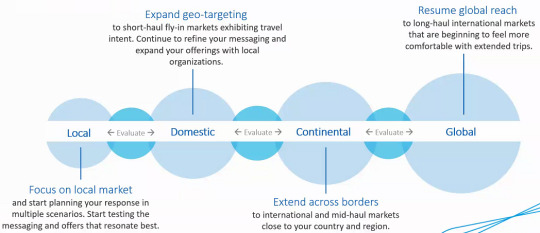
Hyper-local market i.e. day to day activities helping them get out from local homes
Domestic - reach strata audience AROUND the country

Shifting focus and spend towards the market that will be willing to travel

Messaging with topics that are top of mind - cleaning procedures and safety. Thinking customer journey mapping
Building recovery steps:

0 notes
Text
Planning for Hospitality Recover in Sales by Amadeus
#1 Stages of hospitality industry recovery

As at 22nd June, Singapore is still at Local reopening with the recent allowance of social gathering up to 5 people. Social distancing measures are still in place with people having to wear masks whenever they are outside. Location tracking is in place, requiring people to check in and check out with every shop they visit. However, dining in is now available, as long as kept within restrictions. Entertainment areas (i.e. attractions, clubbing) and large-scale events are not allowed.
Formulating a strategy that works requires more than the usual business mix (i.e. Leisure & Business) but instead to understand deeper, such as their intention for travelling

Action steps:
Determine your revenue mix - this will determine length of time for business to resume normally & forecast how “at-risk” future bookings are
Look for group business opportunities outside normal mix (smaller & local; brainstorm creative use of spaces & promotions to target them)
Consider targeting events that can be more local i.e. staycation
#2 Key indicators of recovery
Regulations instilled by the various countries are key to recovery. Here are some of government-related indicators:
Travel restrictions in your local markets
Travel restrictions in your key feeder markets (geographic regions where your clients/business originate)
Guidance on group capacity maximums from local and national authorities
Health code ordinances and licensing requirements from local and national governments
Apart from that, there are also some market indicators to follow during recovery:
Market Demand: Track search demand, occupancy rates, average length of stay, and booking trends across your competitive set. Compare your demand signals across platforms to understand your performance via OTAs and direct bookings relative to your peers. This will tell you if you are lagging or leading the recovery trend of your local market.
Feeder Markets: Analyze market segment bookings between you and your competitive set, flight booking data from feeder markets, and the geographic origin of recent and future bookings. In addition, trends in the geographic origin of web traffic can be a leading indicator of future demand from feeder markets.
Competitor Campaigns: Analyze the campaigns and advertising spend of your competitive set and local market. Monitor your competitors’ websites for updated promotions and group packages. Evaluate new event types that your competitive set is selling and determine if any innovations can be brought into your property’s event mix.
Action steps:
Develop a dashboard of key market indicators and assign a team member to track them weekly.
Make understanding industry trends and regional news part of your daily routines.
Invest in market research and competitive intelligence tools to gain insight into market trends and forward looking data such as flight booking data and competitive booking trends.
Package the information gathered into expertise to share with your customers and community. e.g. insights on local travel trends via LinkedIn or presenting a webinar based on your research to your chamber of commerce
#3 The critical path to an effective recovery strategy
Navigating through recovery require reevaluation of strategy based on market indicators and condition of local community. These are the three key areas to focus on:
Think Local as local markets will recover first. Strengthen community relationships and to explore creative partnership opportunities such as space sharing or creating new experiences with local vendors.
Create New KPIs to reflect the new actions to navigate the crisis, whether it’s check-in calls, retained bookings, or community partnerships - celebrate new types of ‘wins’ and capture how sales teams are impacting their coworkers, communities, and longer-term prospects of the property.
Create New Buyer Personas as the business mix is going to change. On an even more fundamental level, customers across every segment will place a premium on cleanliness and safety. With the dawn of ‘Generation Clean’ your property’s ability to meet cleaning standards are now inextricably embedded in customer expectations. Regardless of the segment you have traditionally served, you now have a buyer with newly evolved needs. Create personas for them, understand what they need and will expect, and clearly define how your property is uniquely positioned to serve them
Tactical steps:
Check In With Your Customers by exercising empathy, understanding what they are going through and fortifying relationships with them
Clean Your Database because when is the best time than now?
Create New Packages and offer new products depending on the new customer mix. e.g. create packages with community partners for staycations or explore ways to stage a semi-virtual board meeting
Refresh Buyer Enablement Collateral by updating seating capacity for socially distanced events, taking pictures of your event room set up with better audio/visual equipment, and updating your website with new packages and offerings.
Identify a Target List of Groups with an understanding of your customer’s challenges, new buyer personas, and local market knowledge - create a list of groups to focus on first.
Reevaluate and Repeat as New Markets Open: As recovery starts to go through phases of domestic and global reopening, it is important to review the effectiveness of your previous actions and revise them on an ongoing basis.
#4 Trends in sales for a digitally accelerated future
Consultative Selling: Sales needs to position themselves as experts on their property, their city, and their customers’ needs. A crowded digital marketplace is making it harder to set yourself apart, and customers no longer see value from cold calls and emails alone. Sales teams must understand that they are no longer selling rooms; they are selling their expertise.
Virtual Relationship Building: Whether it’s hosting virtual happy hours, online networking events, or leveraging LinkedIn to build a brand, maintaining virtual relationships is an art form that many sales reps have not had formal training in. Invest in classes and training to provide your sales teams with a foundational set of skills needed for a virtual world.
Proactive Problem Solving: With social distancing, events now require more square feet per attendee. This means that every property now effectively has less event space. If your property no longer has enough space for a gathering that’s already on the books, it’s time to look for solutions. Whether it’s finding an off-property meeting space that attendees can use in the day (while still staying in your rooms), repurposing unoccupied outdoor space, or investing in audio/visual equipment to make the event a virtual/inperson hybrid event – empower your sales team to create solutions and keep existing business on the books.
0 notes
Text
Negotiation Skills by Chris Croft
Why we avoid negotiating?
Culture - In countries like UK & US, they do not really negotiate and assume it’s rude
Unstructured - No rules, high level of uncertainty & fear of rejection
Embarrassment - Fear of looking cheap or greedy especially after the other party rejects. Wanting to be liked is the biggest factor
How to overcome embarrassment and pride?
Think of negotiating as a game - offer a lower price, see what happens!
Why you shouldn’t lie while negotiating?
You don’t know how much they know
You might get caught lying
Body language gives you away - especially the human eye and brain. Signs: touching nose or face, too little or too much eye contact, going red, sweating, shuffling around
It becomes more difficult to maneuver - getting tangled up in your own lies
5 Alternatives of lying (or becoming evasive)
Use feelings “I just don’t feel very happy with paying that much”
“I dont know...”
“I’m not allowed to say....”
“You don’t think I’m gonna tell you that do you?”
“It depends” - favourite to find out more!
Fear of losing the deal
There is only 2 ways it happens - either you walk away or they walk away.
If you walk away. The key with YOU walking (or pretending to walk) away is to be prepared to “crumble”. Quite often, you may actually get an unexpected “Yes”.
If they walk away. It will not happen if you are nice but the strategy is to blame it on yourself. You can always reel them back in if they are about to walk away by saying “I am sure we are able to find a deal somehow!”
When you should negotiate
An offer is made right at the start - shows their keenness to sell it. If you begin to negotiate with numbers, the bad thing is that it leaves no other room for negotiation and you have to buy it if agreed upon. Instead: Seller: How about I give you a 10% off? You: Hmm. Can you reduce it any more than that?
The item is on sale - similar to them making an offer from the start. Just because they are reduced, it is all the more a reason not to pay the price
If the manager is present - it is an invitation to haggle
If you are not a 100% keen - product/service is not perfect or you are not ready yet. Make an outrageous offer, you have nothing to lost
You have other options - one really good alternative makes you much stronger because you can go to your other option.
When you are the seller & the customer wants something more - charge a small fee instead of giving it for free as a goodwill so that customers will not take it for granted
When you have a complaint - most of us will just put up with it/give a bad review. But you can get something else by saying you are unhappy with what happened and you’d be happy if something else gets done instead. But remember to be nice & get them to be on your side “I know it’s not your fault that this happens, but what I want is....”
Your walkaway number is your strong point
If you are willing to pay $5,000 for a $7,000 holiday and the seller has reduced the price to $5,010 you should NOT accept it. Why?
Logical - Why would you buy or sell something that is less that its worth to you?
Emotional - When you set a limit, you will often go past it. Walk away to maintain your mental strength.
Before you negotiate you need to set....
As a buyer:
Limit - the highest number you will go to
Opening offer - lower number/optimistic attempt to get a bargain
As a seller:
Limit - lowest you’ll sell for
Opening offer - high number/great profit
While the opening offer is externally based i.e. based on market and demand, your limit is internally based and should be set before you see the price. If not careful, your limit will become affected by the going rate/market rate.
Tradables - other things that price
Includes some physical aspects of the product or valuable aspect of a service that contain a certain benefit. Be sure to prepare a list of tradables - add or reduce according to the price offered.
Advantages:
You get the tradables you want
Get a better price - give them tradables instead of money.
Don’t look weak - “I can come down the price if you give me X”
It stops them pushing you down repeatedly
Look reasonable - justifying reduction/increase in price
Questions for Tradables:
What do I want?
What do they want?
What can I offer?
What would they offer?
Prepare their weakness
Focus on the other person’s weakness during the negotiation.
As a buyer:
Don’t think: I must buy this no matter what at any price Instead, think: I bet they are desperate to sell it
As a seller:
Don’t think: I must sell this product no matter what price at Instead, think: I bet they are desperate to buy this, they are just trying to get me to come down in price, but I bet they can pay the full amount if they have to
The Preamble
There is no rush, you would like to wait for them to open. Ask loads of questions and listen - this is where you will get their weaknesses. However, in some situations you will have to open first i.e. in a shop or a market. Reasons to avoid opening
If they open first, it may be more beneficial - if they are buying, they may say how much they are willing to spend
If you open first, it’s riskier - you may be pricing it much lower than what they wanted to pay for
You get key information from their opening offer
What if they ask you to open first? Chuck it back to them, at least once:
I’m not sure, what do you think?
What do you mean by a good price?
Do you have a budget in mind?
Opening offer
Your opening offer should exceed what you are hoping for.
As a buyer: low number
As a seller: high number
Seller does not know how much you are willing to pay, hence the only way is to open higher. If you think a customer is willing to pay $75 to $120, you will have to offer more than $120 (opening offer: $150).
Watch for the flinch
English flinch: intake of breath, looking unhappy, turning away, words of disappointment, putting pen down
As a buyer:
Always flinch as soon as the other party makes the opening offer
Saying nothing always send the signal that you are happy - not the signal you want to send
As a seller:
Watch for the flinch if there is one. If there isn’t, don’t move from your starting position
Don’t use round numbers
Nonround number make your negotiation figures more credible - 4s & 7s are the best numbers
Tactic #1 The vice technique
Usually used by buyers.
As a buyer:
Do not say: “If you lower it a little more I will buy it from you” because the aim is to get the price down as much as possible
“It’s still too much for me I’m afraid, I can only afford X”
“Could you lower it a little bit more?”
As a seller:
“By how much exactly?” and once they have put a number (opening offer)
“Oh no, I can’t possibly do that, but if you gave me Y i guess I could come down to X” where Y are tradables & X is a price
Tactic #2 Knocking the product
Usually used by buyers.
As a buyer:
“It’s not quite the colour I’m looking for”
“It’s a bit different from what we normally use”
If they say “In that case, why are you still looking at it?” you can say “I was hoping that seeing it in real life it would be okay, but I am not quite sure”
As a seller:
“That’s is the reason why the price is so reasonable/affordable/such a bargain”
Tell yourself that they actually love the colour, if you hold firm they will pay the price
Body language: touching the product excessively, smiling, happy with the product
“What do you think about it apart from that” if they say “It’s great apart from that”, stick to your price or the first point
Tactic #3 The reluctant buyer/seller
Works well for both buyer & seller
As a buyer:
“I don’t really want to buy but okay then, if the price is really attractive”
As a seller:
Pretend that something is filled up i.e. schedule, occupancy, etc
Pretend that it is your favourite thing in a shop, and you can’t part with it
Tactic #4 Hiding the value of tradables
Mainly for buyer.
As a buyer:
If you want something, pretend you don’t want it and vice versa
Instead of saying “WOW I really want this”, say: “What colours do you have?” and then “Hmm, this is not ideal but I guess the red one will do if the price is good”
Do not blurt out your requirement right away, Never say “I will need it by the end of the week” instead say “When can i have it?”
Save requirements for the middle/end of negotiation, make it casual
Tactic #4 The salami
Works well for both buyer & seller
As a buyer:
Ask for things gradually in a way it makes it seem unreasonable for them not to give you
As a seller:
Counterattack - trade one thing for another
Counterattack - on a completely different front (this may require planning)
Take everything off the table - “I just need 5 minutes to check with my boss” and after “I realised that this deal is no longer working for me. I can’t give you all the things that we have just been discussing”
Tactic #5 Time pressure
Works well for both buyer & seller. Here are the 3 types:
How much time to meet or discuss?
When must you make the agreement?
When are the tradables needed by?
Don’t let the party know that you have a time pressure. Sometimes, time is more important than the price & deal is not the one that they need but the job to be done. Look for clues of others’ weaknesses while hiding yours.
Win-win situations
It is about tradables as buyer is buying something that they are happy with and the seller is making a profit.
How to trade?
Start you negotiation with room for maneuver - setting a lower price limit (if buyer) or a higher price limit (if seller)
Getting from start to finish
Concede
Trading - always better because: (1) Conceding makes you look weak, (2) You may gain by trading & (3) You have a reason to adjusting the price point The words are important: “If you..... then I......”
Use small steps
If someone reduce a price by a certain amount, they will likely come down by another of that same amount. Instead move in small amounts with tradables that does not cost you much, as many as necessary to get you that agreement. Move from your trading point and upwards, not from their price and downwards
Importance of trading
Negotiation tips
Be prepared for everything
Remain nice
Trade from your starting position
Always be prepared - you never know what’s going to happen
Don’t give up!
Negotiation errors
Coming down too much
Not persisting
Using round numbers
Not being polite
Failing to trade
Closing
Waffling out of “Final Offer”
Never say “That is my final offer” instead, say “I can’t go lower or higher, I really can’t”
If they say “And that’s my final offer”, you can propose tradables to finalise the deal
Split the difference
Do not accept splitting the difference by saying “I just can’t go over/below X”
Most of the time the person who is making this offer is willing to accede to the other party’s request, but giving it one last go
But if (unlikely) they say “then the deal’s off”, you can reel them back in by saying “Hmm... how about meeting in the middle?”
You have officially gotten a better deal than split the difference
The nibble
When the other person asks for something in the end and you say okay
Most of the times, it happens after you have agreed on the deal
And you should not say yes, imply that there is an extra cost to it
Follow the nibble rules
Say no
Halfway through ask about any other potential costs
The quivering pen
Similar to the nibble, but you ask before the deal is signed
Style has to be friendly and cheeky
If used on you, stay strong and do not concede. Something like “Oh no, sorry I can’t really give you anymore. This really is the best deal”
If they say “Deal’s off” reel them back in saying “I’m sure we’ll find a way, we’ve come this far. It’s a shame to give it all up now”, and “Maybe if you give me X, i can agree to this one more thing you’re asking for”
When should you walk away?
When you have no trading options left, either
Buy up (for buyers)
Reduce your price (for sellers)
Walk away
Know your walkaway point
0 notes



